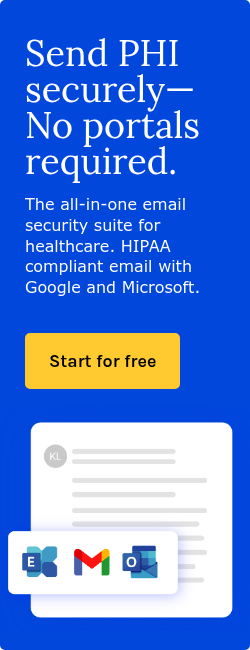
Healthcare organizations are moving away from traditional perimeter-based security toward zero trust architectures. This shift comes as traditional security boundaries blur with the rise of cloud services, remote work, and connected medical devices. According to a 2020 research paper, hacking and IT incidents in healthcare have increased by 73.4% in just one year (2018-2019), with over 80% of all healthcare hacking incidents from the past decade occurring in just the last four years (2015-2019). These statistics prove why zero trust's "never trust, always verify" principle has become necessary, as traditional security perimeters prove insufficient against modern threats.
Read more: Zero trust architecture in healthcare cybersecurity
What is zero trust?
Zero trust is a security framework that requires all users and devices, whether inside or outside the organization's network, to be authenticated, authorized, and continuously validated before gaining access to applications and data. In healthcare, this means every access request to patient records, medical devices, or clinical applications must be verified, regardless of where it originates.
Why healthcare needs zero trust
The healthcare sector faces unique challenges that make zero trust particularly relevant:
- Legacy systems and modern technology: Healthcare organizations often run critical legacy systems alongside modern cloud applications. Zero trust helps secure this complex environment by focusing on protecting resources rather than network segments.
- Diverse user base: Clinicians, administrators, vendors, and patients all need different levels of access to various systems. Zero trust enables fine-tuned access control based on user identity and context.
- Connected medical devices: The rapid increase of IoT medical devices creates new security challenges. Zero trust principles help manage and secure these devices by treating them as untrusted endpoints requiring continuous verification.
Learn more: Securing legacy systems within healthcare
Implementation
The journey to zero trust requires careful planning and a phased implementation. As NIST emphasizes, organizations will likely operate in a hybrid zero-trust/perimeter-based mode indefinitely while modernizing their infrastructure. Healthcare organizations should focus on incrementally implementing zero trust principles that protect their highest-value data assets.
Phase 1: Baseline assessment
Begin with a comprehensive inventory of three critical elements:
- Actors: Map all users, service accounts, and privileged access patterns
- Assets: Catalog all hardware, applications, and digital resources including IoT/medical devices
- Processes: Document key workflows, data flows, and business dependencies
This foundational knowledge is required as incomplete mapping often leads to access denials and business process failures.
Phase 2: Solution selection and policy formation
Choose candidate solutions based on key criteria:
- Component compatibility with existing systems
- Support for required clinical applications and protocols
- Integration capabilities with ID management systems
- Logging and monitoring capabilities
- Develop access policies that balance security with clinical workflow requirements.
Phase 3: Initial deployment and monitoring
Start with a low-risk business process as your pilot:
- Operate initially in observation mode to establish baselines
- Monitor access patterns and policy effectiveness
- Adjust policies based on operational feedback
- Maintain detailed logs for analysis and improvement
Phase 4: Expansion and optimization
Gradually expand zero trust controls:
- Evaluate each new workflow for zero trust architecture readiness
- Continue operating hybrid architecture where needed
- Regular reassessment of policies and access patterns
- Ongoing monitoring and adjustment of security controls
This phased approach allows healthcare organizations to maintain critical operations while systematically implementing zero trust principles across their environment.
How zero trust affects common healthcare scenarios
Emergency department access
A physician needs immediate access to patient records. Zero Trust validates their identity, device security status, and location before granting access. This happens automatically and quickly enough to support emergency care.
Remote patient monitoring
Connected medical devices sending patient data must authenticate themselves and encrypt all communications. Zero trust ensures only authorized devices can connect and that data reaches only intended recipients.
Vendor management
Third-party vendors requiring system access are verified not just at login, but continuously throughout their session. Access is limited to only the specific systems needed for their work.
FAQs
Won't zero trust slow down emergency access to patient records?
No, when properly implemented, Zero trust can actually streamline access while maintaining security. Modern solutions can verify access requests in milliseconds, and emergency protocols can be built into the system while maintaining security.
What's the difference between traditional security and zero trust?
Traditional security follows a "castle-and-moat" approach, trusting everything inside the network. Zero trust treats every access request as potentially hostile, requiring verification regardless of location or network status.
How does zero trust help with HIPAA compliance?
Zero trust supports HIPAA compliance by enforcing minimum necessary access, maintaining detailed audit trails, and providing strong technical safeguards for protected health information (PHI). It helps demonstrate due diligence in protecting patient information.
Subscribe to Paubox Weekly
Every Friday we'll bring you the most important news from Paubox. Our aim is to make you smarter, faster.




